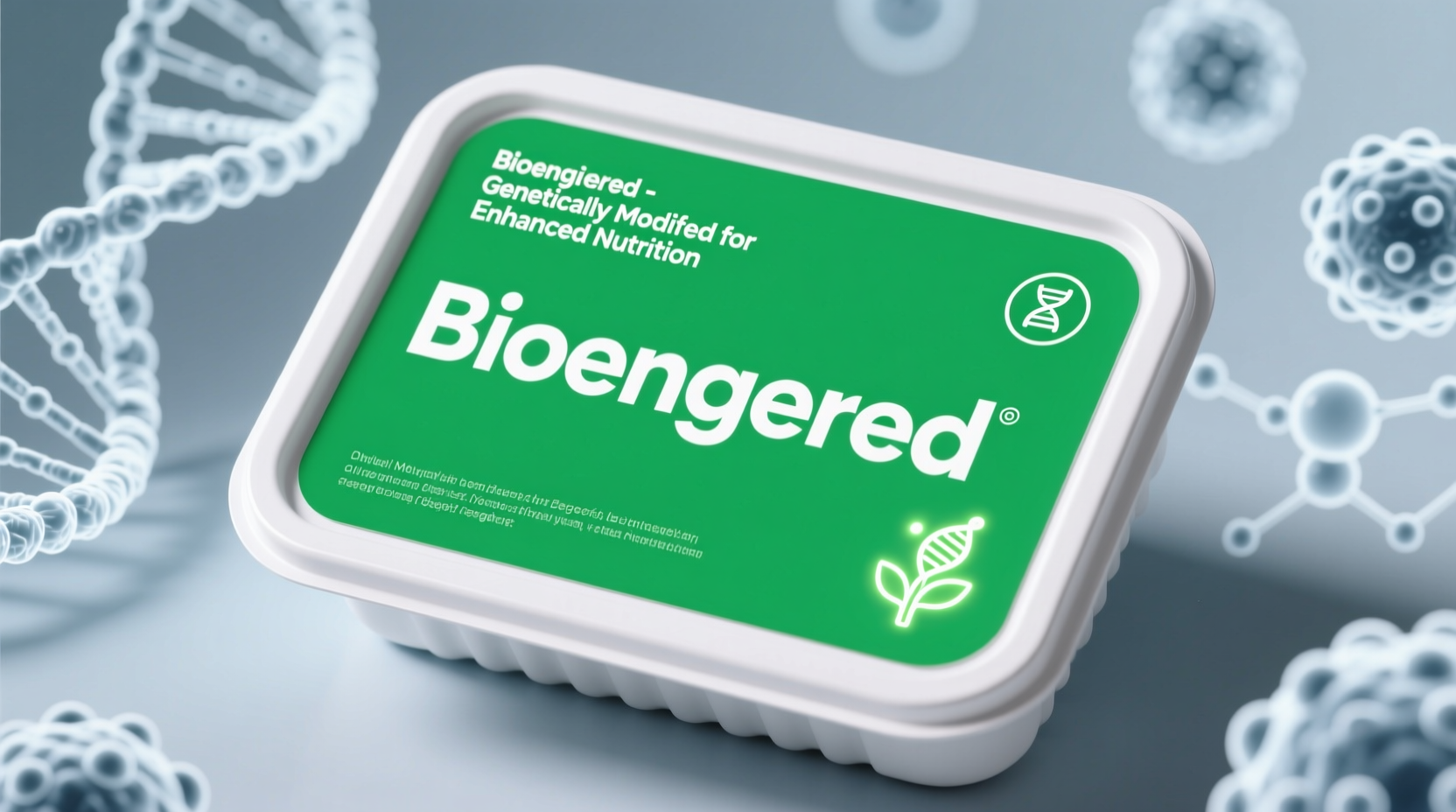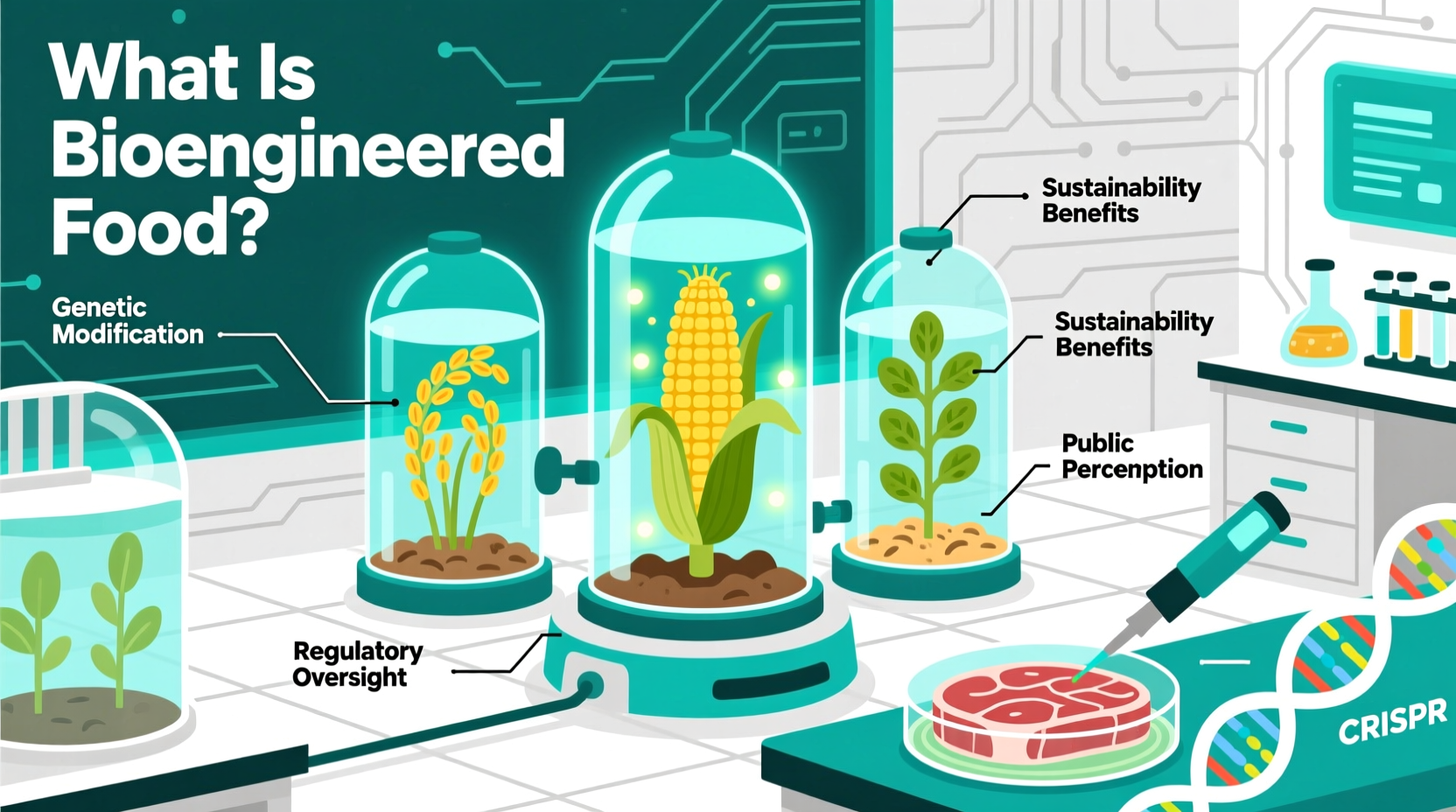Bioengineered food refers to products containing detectable genetic material that has been modified through modern molecular techniques, as defined by the USDA's National Bioengineered Food Disclosure Standard. Unlike traditional GMOs, bioengineered foods specifically contain foreign DNA that can be verified through testing, with mandatory labeling requirements taking effect in 2022.
Understanding what constitutes bioengineered food is essential for making informed grocery choices in today's marketplace. This comprehensive guide explains the science, regulations, and practical implications of bioengineered foods, helping you navigate labels and understand what's actually in your food.
Defining Bioengineered Food: Beyond the Buzzwords
When you see "bioengineered" on a food label, it specifically indicates products containing genetically modified material that can be detected through laboratory testing. This precise definition emerged from the USDA's National Bioengineered Food Disclosure Standard, which took full effect on January 1, 2022. The regulation targets foods with modified genetic material that couldn't occur naturally or through traditional crossbreeding.
Unlike broader GMO terminology, "bioengineered" represents a legally defined category with specific regulatory requirements. The key distinction lies in detectability—bioengineered foods must contain modified genetic material that testing can verify, whereas some GMO processes might not leave detectable traces.

Regulatory Timeline: How We Got Here
The journey to today's bioengineered food labeling system spans decades of scientific advancement and policy development:
- 1994: FDA approves first genetically modified food (Flavr Savr tomato)
- 2016: National Bioengineered Food Disclosure Law signed by President Obama
- 2018: USDA establishes National Bioengineered Food Disclosure Standard
- 2020: Mandatory compliance date set for January 1, 2022
- 2022: Full implementation of bioengineered food labeling requirements
Bioengineered vs. GMO: Clearing the Confusion
Many consumers use "GMO" and "bioengineered" interchangeably, but significant differences exist between these terms:
| Characteristic | Bioengineered Food | Traditional GMO |
|---|---|---|
| Legal Definition | Federally defined category with specific labeling requirements | Broad term without precise regulatory definition |
| Detectability | Must contain detectable modified genetic material | May or may not contain detectable modifications |
| Labeling Requirement | Mandatory "Bioengineered" disclosure | No specific federal labeling requirement |
| Scope | Narrower category focusing on detectable modifications | Broad category including all genetically modified organisms |
Common Bioengineered Foods in Your Grocery Store
While not all genetically modified crops qualify as bioengineered under current regulations, several common ingredients frequently appear in bioengineered products:
- Sweet corn - Approximately 92% of U.S. sweet corn is bioengineered
- Soybeans - Over 94% of U.S. soybeans are bioengineered varieties
- Sugar beets - Nearly 99% of U.S. sugar beets contain bioengineered traits
- Canola - About 95% of U.S. canola is bioengineered
- Papaya - Most Hawaiian papaya is bioengineered for virus resistance
Processed foods containing these ingredients may require bioengineered labeling if the final product contains detectable modified genetic material. However, highly refined products like sugar or oil from bioengineered sources often don't require labeling because the refining process removes detectable genetic material.
Understanding Bioengineered Food Labels
The USDA standard specifies three acceptable ways manufacturers can disclose bioengineered content:
- Text disclosure: "Bioengineered food" statement on packaging
- Symbol: USDA-approved bioengineered symbol (a sun-like icon with "BE" inside)
- Digital link: QR code or URL directing to disclosure information
Manufacturers must ensure these disclosures are visible and understandable. The regulation specifically prohibits using terms like "GMO-free" or "non-GMO" as primary disclosures, though these may appear alongside the required bioengineered statement.
Scientific Consensus on Safety
Major scientific organizations have evaluated the safety of bioengineered foods through extensive research. According to the National Academies of Sciences, Engineering, and Medicine's comprehensive 2016 report analyzing over 900 studies, bioengineered crops pose no greater health risks than conventionally bred crops. Similarly, the World Health Organization states that currently available bioengineered foods have passed safety assessments and are not likely to present risks.
It's important to note that each bioengineered food undergoes individual safety evaluation before market approval. The regulatory process examines potential allergenicity, toxicity, and nutritional composition to ensure consumer safety.
Practical Guidance for Consumers
Navigating bioengineered food labels doesn't need to be confusing. Here's what savvy shoppers should know:
- Look for the disclosure: Check packaging for the required bioengineered statement or symbol
- Understand exemptions: Foods with less than 5% bioengineered content per ingredient may be exempt
- Organic certification: USDA Organic products cannot contain bioengineered ingredients
- Ask questions: Contact manufacturers if labeling seems unclear or incomplete
Remember that bioengineered labeling indicates the presence of detectable modified genetic material, not necessarily any difference in nutritional value or safety compared to non-bioengineered counterparts. The primary purpose of the labeling standard is to provide transparency rather than indicate safety concerns.











 浙公网安备
33010002000092号
浙公网安备
33010002000092号 浙B2-20120091-4
浙B2-20120091-4